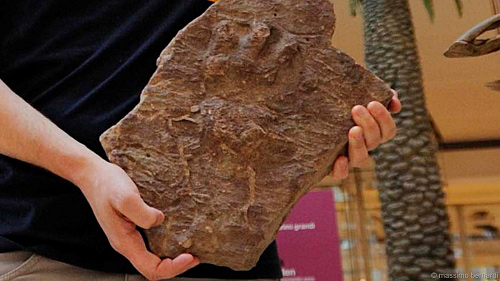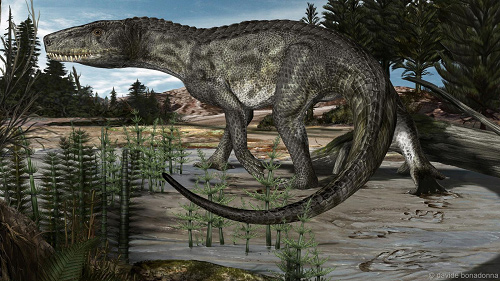The mysterious footprints of prehistoric reptiles were discovered
Scientists found animal footprints in the Archosauriforms reptile group, suggesting they prospered before and during the Great Extinction.
Mysterious footprints of prehistoric reptiles
BBC on June 18 reported that scientists at the Science Museum in Trento, Italy have found footprints of prehistoric animals at Bletterbach Geopark , Italy.

Footprints found in Italy.(Photo: BBC)
Finding the footprint of an extinct animal is very difficult. Moreover, this is a footprint from more than 250 million years ago, the time when the worst extinction event in Earth's history, also known as the Permian Great Extinction , killed 96% of animals. on the planet.
By combining data from fossil bones and found footprints, scientists realized that Archosauriforms were more diverse than they thought.
Archosauriforms is a branch of reptiles that includes predominant animals such as crocodiles, flying lizards and many other lizards. It is also the group that later formed dinosaurs.
Massimo Bernardi, the museum's expert, said that by searching for footprints of prehistoric animals, his team began to understand " a common language" between two very different data sets. Fossil bones and fossil tracks like footprints. These two data sets are normally separated, not combined.

Archosauriforms are more diverse than we think.(Graphic: Davide Bonadonna)
Thanks to the advanced anatomical method, Bernardi and his colleagues confirmed that the found footprints of an Archosaurifoms-like species existed about 10 million years before the Triassic period. This study shows that Archosaurifoms have prospered before or during the Great Depression.
They also found that the animals belong to this group, existed before and after the extinction event, living in very low latitudes. This is in contrast to another study that suggests that all reptiles have moved away from low latitudes or tropical regions due to high temperatures.
" If these little known Archosaurifoms do not survive the end of the Permian extinction, today we will not see the birds flying above our heads and the paleontological books do not mention. dinosaurs, "Bernardi said. Today's birds are descendants of a group of Theropods.
This finding sheds more light on the diversity of Archosauriforms before and after the Great Extinction, helping scientists have more suggestions about the evolution of species, understanding why this group can survive. and develop later.
It is possible that these species have dominant properties to help them survive the Great Extinction, plus a little "luck ", Bernardi concludes.
- Discovered ancient elephant footprints
- Footprints of 3.6 million years of prehistoric people reveal many secrets
- Again the traces of 'legendary footprints' appeared?
- Discover the most mysterious, ancient and mysterious
- Discovered human footprints buried in the sand 80,000 years
- Rumored footprints from demons around the world
- Discover ancient footprints and mysterious flying objects
- Find ancient giant footprints in Africa
- Strange 'footprint' in the deep sea
- Whose fossil footprints on Roccamonfina volcano are?
- Human footprints date back to 25,000 years in Mexico
- Footprints of mysterious giants in Malaysia
 Discovered an ancient centipede fossil 99 million years old
Discovered an ancient centipede fossil 99 million years old Discovered bat-like dinosaurs in China
Discovered bat-like dinosaurs in China Discovered a 200-year-old bronze cannon of the coast
Discovered a 200-year-old bronze cannon of the coast Discover 305 million-year-old spider fossils
Discover 305 million-year-old spider fossils